Parts of endocrine system and their function. Endocrine System: Anatomy, Function, and Key Components Explained
How does the endocrine system work. What are the main glands and organs of the endocrine system. How do hormones affect the body. What is the difference between endocrine and nervous system signaling.
The Fundamentals of the Endocrine System
The endocrine system is a complex network of glands and organs that produce and secrete hormones directly into the bloodstream. These hormones act as chemical messengers, regulating various bodily functions and maintaining homeostasis. Understanding the endocrine system is crucial for comprehending how our bodies function on a day-to-day basis.
Key Components of the Endocrine System
The endocrine system consists of several major glands and organs, including:
- Pituitary gland
- Thyroid gland
- Parathyroid glands
- Adrenal glands
- Pancreas
- Reproductive glands (ovaries in females, testes in males)
- Hypothalamus
- Pineal gland
- Thymus
Each of these glands and organs plays a unique role in hormone production and regulation, contributing to the overall function of the endocrine system.
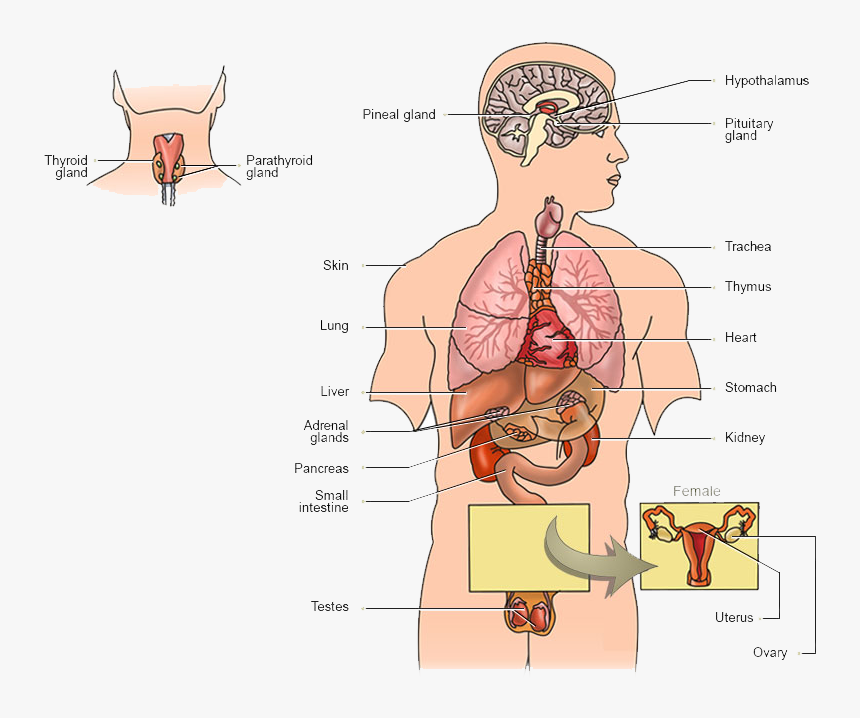
Endocrine vs. Nervous System: Understanding the Differences
While both the endocrine and nervous systems are responsible for maintaining homeostasis in the body, they operate in distinct ways. The primary differences between these two systems lie in their signaling mechanisms, response times, and target environments.
Signaling Mechanisms
The nervous system utilizes both electrical and chemical signaling, whereas the endocrine system relies solely on chemical signaling through hormones. This fundamental difference impacts how quickly and specifically each system can respond to stimuli.
Response Times
Nervous system responses are typically rapid, occurring within milliseconds. In contrast, endocrine system responses can range from seconds to days, depending on the specific hormone and target tissue involved. This variance in response time is due to the different methods of signal transmission and the time required for hormone synthesis and transport.
Target Environments
The nervous system primarily targets both internal and external environments, allowing for quick responses to changes in an organism’s surroundings. The endocrine system, however, focuses primarily on maintaining the internal environment of the body, regulating long-term processes such as growth, metabolism, and reproduction.

Hormone Function and Regulation
Hormones are the primary chemical messengers of the endocrine system. They are secreted by endocrine glands and travel through the bloodstream to reach their target cells. Once they bind to specific receptors on these cells, hormones can trigger a wide range of physiological responses.
Types of Hormones
There are three main types of hormones:
- Peptide hormones: Made up of amino acids and typically water-soluble
- Steroid hormones: Derived from cholesterol and lipid-soluble
- Amine hormones: Derived from amino acids and can be either water-soluble or lipid-soluble
Each type of hormone interacts with target cells differently, influencing their method of action and the speed of their effects.
Hormone Regulation
The production and secretion of hormones are tightly regulated through feedback mechanisms. These mechanisms ensure that hormone levels remain within appropriate ranges, maintaining homeostasis in the body. Negative feedback is the most common type of regulation, where an increase in hormone levels triggers a decrease in production, and vice versa.

The Pituitary Gland: The Master Endocrine Gland
Often referred to as the “master gland” of the endocrine system, the pituitary gland plays a crucial role in regulating the function of other endocrine glands. Located at the base of the brain, the pituitary gland is divided into two lobes: the anterior lobe and the posterior lobe.
Anterior Pituitary Hormones
The anterior pituitary produces and secretes several important hormones, including:
- Growth hormone (GH)
- Adrenocorticotropic hormone (ACTH)
- Thyroid-stimulating hormone (TSH)
- Follicle-stimulating hormone (FSH)
- Luteinizing hormone (LH)
- Prolactin
These hormones regulate various bodily functions, from growth and metabolism to reproduction and stress response.
Posterior Pituitary Hormones
The posterior pituitary stores and releases two hormones produced by the hypothalamus:
- Antidiuretic hormone (ADH)
- Oxytocin
ADH plays a crucial role in water retention and blood pressure regulation, while oxytocin is involved in childbirth, breastfeeding, and social bonding.

The Thyroid Gland and Metabolic Regulation
The thyroid gland, located in the neck, produces hormones that are essential for regulating metabolism, growth, and development. The two main hormones produced by the thyroid gland are thyroxine (T4) and triiodothyronine (T3).
Functions of Thyroid Hormones
Thyroid hormones have widespread effects on the body, including:
- Regulating basal metabolic rate
- Influencing heart rate and blood pressure
- Supporting proper growth and development
- Maintaining bone density
- Regulating body temperature
Imbalances in thyroid hormone production can lead to various disorders, such as hypothyroidism or hyperthyroidism, which can significantly impact an individual’s overall health and well-being.
The Adrenal Glands and Stress Response
The adrenal glands, located atop the kidneys, play a crucial role in the body’s stress response system. These glands are divided into two distinct regions: the adrenal cortex and the adrenal medulla, each producing different hormones with unique functions.
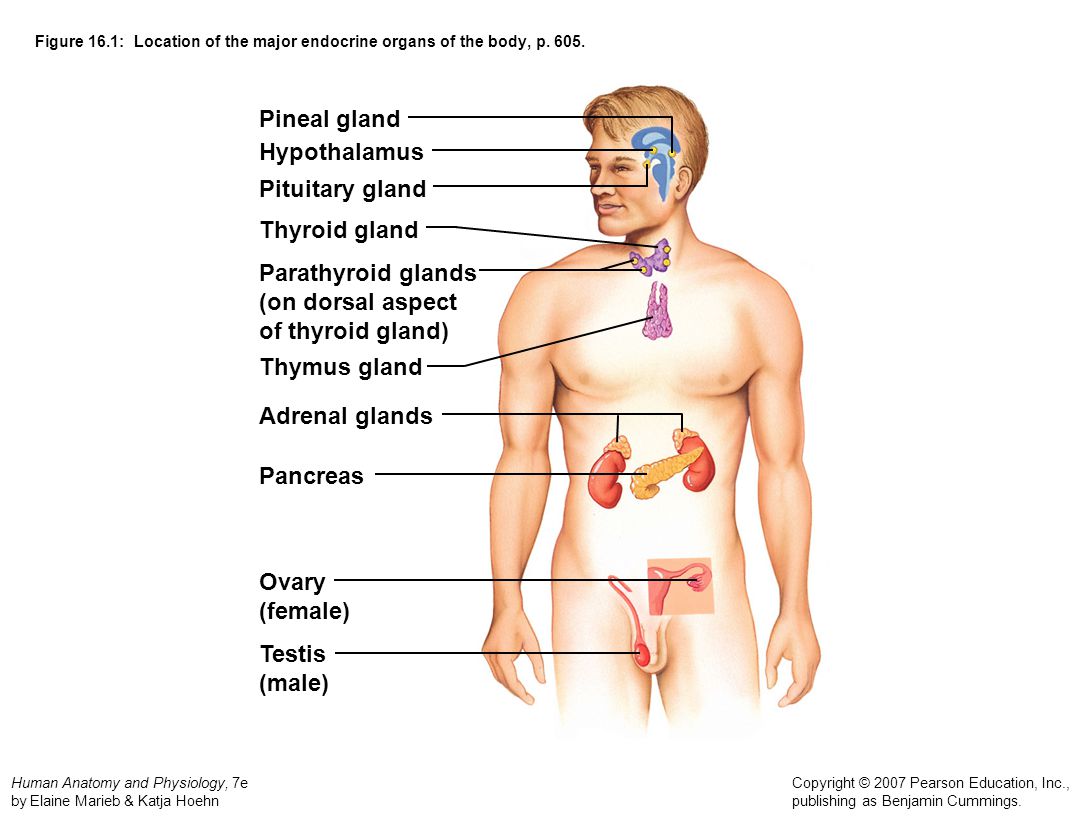
Adrenal Cortex Hormones
The adrenal cortex produces several important hormones, including:
- Glucocorticoids (e.g., cortisol)
- Mineralocorticoids (e.g., aldosterone)
- Androgens
These hormones are involved in various processes, such as metabolism regulation, immune function, and electrolyte balance.
Adrenal Medulla Hormones
The adrenal medulla produces catecholamines, primarily epinephrine (adrenaline) and norepinephrine (noradrenaline). These hormones are responsible for the body’s “fight-or-flight” response, preparing the body for immediate action in stressful situations.
The Pancreas: Endocrine and Exocrine Functions
The pancreas is a unique organ that serves both endocrine and exocrine functions. As an endocrine gland, it produces hormones that regulate blood glucose levels and digestive processes.
Endocrine Functions of the Pancreas
The pancreas produces several important hormones, including:
- Insulin: Lowers blood glucose levels by promoting glucose uptake and storage
- Glucagon: Raises blood glucose levels by promoting glucose release from storage
- Somatostatin: Regulates the release of other pancreatic hormones
- Pancreatic polypeptide: Helps regulate pancreatic secretions
The balance between insulin and glucagon is crucial for maintaining proper blood glucose levels. Disruptions in this balance can lead to conditions such as diabetes mellitus.

Exocrine Functions of the Pancreas
In addition to its endocrine functions, the pancreas also serves as an exocrine gland, producing digestive enzymes that are released into the small intestine. These enzymes play a vital role in breaking down carbohydrates, proteins, and fats in the digestive tract.
Reproductive Glands and Hormones
The reproductive glands, which include the ovaries in females and the testes in males, are responsible for producing sex hormones that regulate reproductive function and secondary sexual characteristics.
Female Reproductive Hormones
The ovaries produce two main types of hormones:
- Estrogen: Responsible for female secondary sexual characteristics and regulation of the menstrual cycle
- Progesterone: Prepares the uterus for pregnancy and supports fetal development
These hormones work in concert to regulate the menstrual cycle and support reproductive functions.
Male Reproductive Hormones
The testes primarily produce testosterone, which is responsible for:

- Development of male secondary sexual characteristics
- Sperm production
- Muscle mass and bone density maintenance
- Regulation of libido
Testosterone plays a crucial role in male reproductive health and overall well-being.
Understanding the intricate workings of the endocrine system is essential for comprehending how our bodies maintain homeostasis and respond to various internal and external stimuli. From regulating metabolism and growth to controlling stress responses and reproductive functions, the endocrine system plays a vital role in nearly every aspect of human physiology. By continuing to study and unravel the complexities of this system, researchers and healthcare professionals can develop more effective treatments for endocrine disorders and improve overall patient care.
An Overview of the Endocrine System · Anatomy and Physiology
An Overview of the Endocrine System · Anatomy and Physiology
By the end of this section, you will be able to:
- Distinguish the types of intercellular communication, their importance, mechanisms, and effects
- Identify the major organs and tissues of the endocrine system and their location in the body
Communication is a process in which a sender transmits signals to one or more receivers to control and coordinate actions. In the human body, two major organ systems participate in relatively “long distance” communication: the nervous system and the endocrine system. Together, these two systems are primarily responsible for maintaining homeostasis in the body.
Neural and Endocrine Signaling
The nervous system uses two types of intercellular communication—electrical and chemical signaling—either by the direct action of an electrical potential, or in the latter case, through the action of chemical neurotransmitters such as serotonin or norepinephrine. Neurotransmitters act locally and rapidly. When an electrical signal in the form of an action potential arrives at the synaptic terminal, they diffuse across the synaptic cleft (the gap between a sending neuron and a receiving neuron or muscle cell). Once the neurotransmitters interact (bind) with receptors on the receiving (post-synaptic) cell, the receptor stimulation is transduced into a response such as continued electrical signaling or modification of cellular response. The target cell responds within milliseconds of receiving the chemical “message”; this response then ceases very quickly once the neural signaling ends. In this way, neural communication enables body functions that involve quick, brief actions, such as movement, sensation, and cognition.In contrast, the endocrine system uses just one method of communication: chemical signaling. These signals are sent by the endocrine organs, which secrete chemicals—the hormone—into the extracellular fluid.
Neurotransmitters act locally and rapidly. When an electrical signal in the form of an action potential arrives at the synaptic terminal, they diffuse across the synaptic cleft (the gap between a sending neuron and a receiving neuron or muscle cell). Once the neurotransmitters interact (bind) with receptors on the receiving (post-synaptic) cell, the receptor stimulation is transduced into a response such as continued electrical signaling or modification of cellular response. The target cell responds within milliseconds of receiving the chemical “message”; this response then ceases very quickly once the neural signaling ends. In this way, neural communication enables body functions that involve quick, brief actions, such as movement, sensation, and cognition.In contrast, the endocrine system uses just one method of communication: chemical signaling. These signals are sent by the endocrine organs, which secrete chemicals—the hormone—into the extracellular fluid. Hormones are transported primarily via the bloodstream throughout the body, where they bind to receptors on target cells, inducing a characteristic response. As a result, endocrine signaling requires more time than neural signaling to prompt a response in target cells, though the precise amount of time varies with different hormones. For example, the hormones released when you are confronted with a dangerous or frightening situation, called the fight-or-flight response, occur by the release of adrenal hormones—epinephrine and norepinephrine—within seconds. In contrast, it may take up to 48 hours for target cells to respond to certain reproductive hormones.
Hormones are transported primarily via the bloodstream throughout the body, where they bind to receptors on target cells, inducing a characteristic response. As a result, endocrine signaling requires more time than neural signaling to prompt a response in target cells, though the precise amount of time varies with different hormones. For example, the hormones released when you are confronted with a dangerous or frightening situation, called the fight-or-flight response, occur by the release of adrenal hormones—epinephrine and norepinephrine—within seconds. In contrast, it may take up to 48 hours for target cells to respond to certain reproductive hormones.
Visit this link to watch an animation of the events that occur when a hormone binds to a cell membrane receptor. What is the secondary messenger made by adenylyl cyclase during the activation of liver cells by epinephrine?
In addition, endocrine signaling is typically less specific than neural signaling. The same hormone may play a role in a variety of different physiological processes depending on the target cells involved.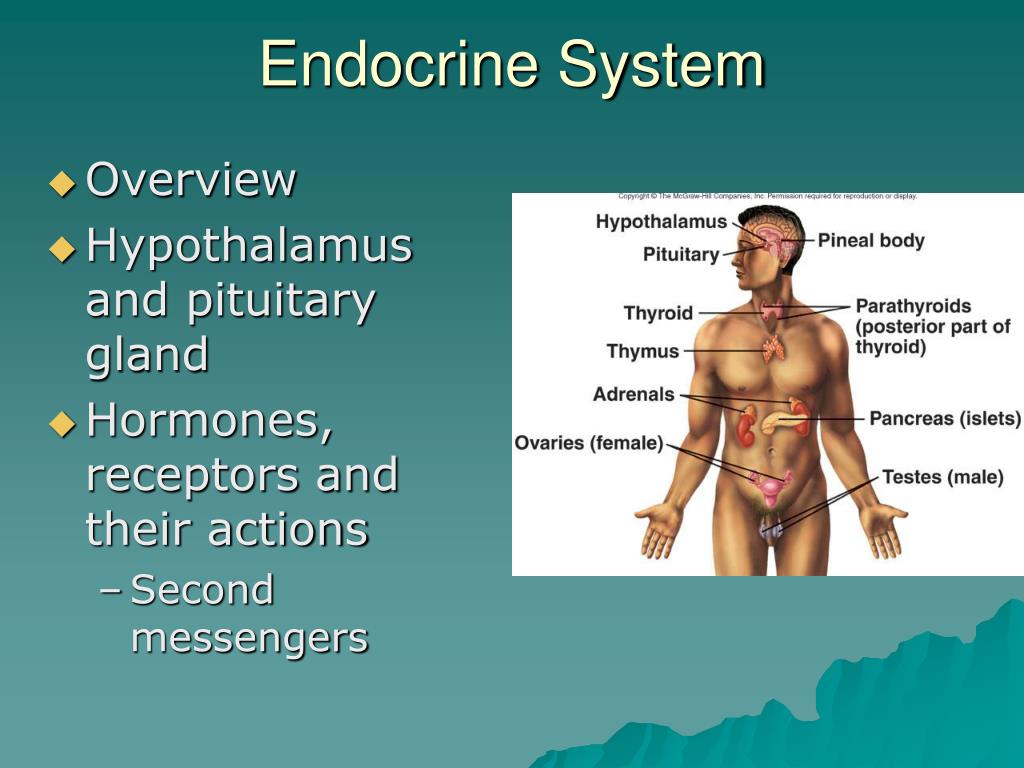 For example, the hormone oxytocin promotes uterine contractions in women in labor. It is also important in breastfeeding, and may be involved in the sexual response and in feelings of emotional attachment in both males and females.
For example, the hormone oxytocin promotes uterine contractions in women in labor. It is also important in breastfeeding, and may be involved in the sexual response and in feelings of emotional attachment in both males and females.
In general, the nervous system involves quick responses to rapid changes in the external environment, and the endocrine system is usually slower acting—taking care of the internal environment of the body, maintaining homeostasis, and controlling reproduction ([link]). So how does the fight-or-flight response that was mentioned earlier happen so quickly if hormones are usually slower acting? It is because the two systems are connected. It is the fast action of the nervous system in response to the danger in the environment that stimulates the adrenal glands to secrete their hormones. As a result, the nervous system can cause rapid endocrine responses to keep up with sudden changes in both the external and internal environments when necessary.
| Endocrine and Nervous Systems | ||
|---|---|---|
| Endocrine system | Nervous system | |
| Signaling mechanism(s) | Chemical | Chemical/electrical |
| Primary chemical signal | Hormones | Neurotransmitters |
| Distance traveled | Long or short | Always short |
| Response time | Fast or slow | Always fast |
| Environment targeted | Internal | Internal and external |
Structures of the Endocrine System
The endocrine system consists of cells, tissues, and organs that secrete hormones as a primary or secondary function.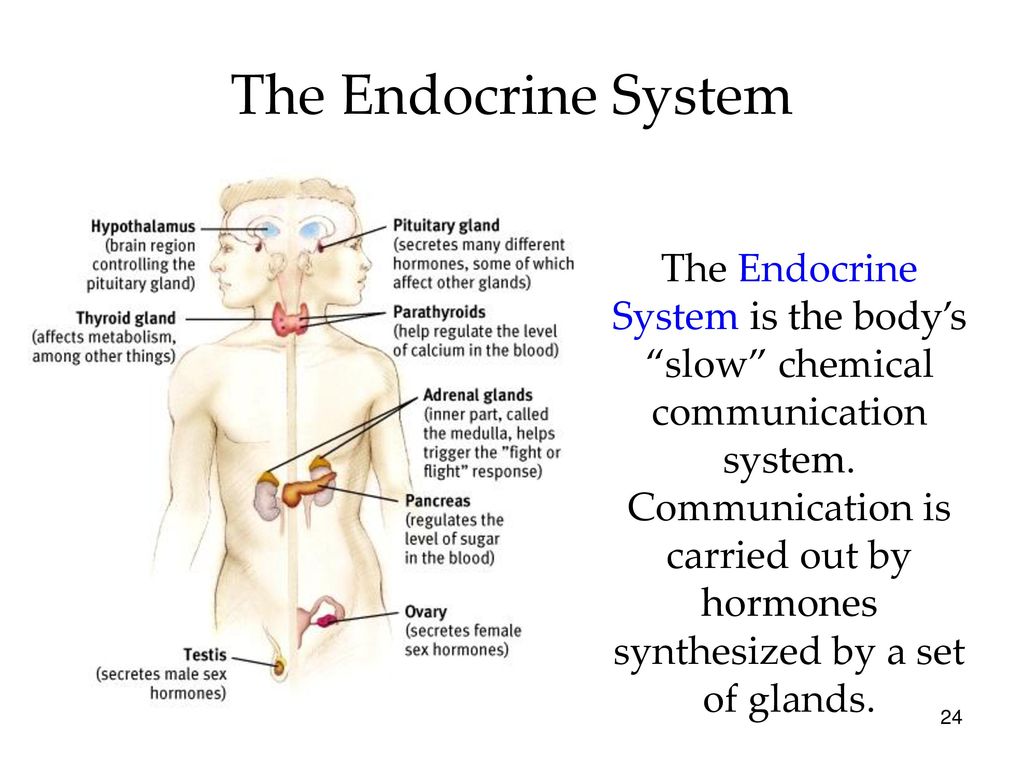 The endocrine gland is the major player in this system. The primary function of these ductless glands is to secrete their hormones directly into the surrounding fluid. The interstitial fluid and the blood vessels then transport the hormones throughout the body. The endocrine system includes the pituitary, thyroid, parathyroid, adrenal, and pineal glands ([link]). Some of these glands have both endocrine and non-endocrine functions. For example, the pancreas contains cells that function in digestion as well as cells that secrete the hormones insulin and glucagon, which regulate blood glucose levels. The hypothalamus, thymus, heart, kidneys, stomach, small intestine, liver, skin, female ovaries, and male testes are other organs that contain cells with endocrine function. Moreover, adipose tissue has long been known to produce hormones, and recent research has revealed that even bone tissue has endocrine functions.
The endocrine gland is the major player in this system. The primary function of these ductless glands is to secrete their hormones directly into the surrounding fluid. The interstitial fluid and the blood vessels then transport the hormones throughout the body. The endocrine system includes the pituitary, thyroid, parathyroid, adrenal, and pineal glands ([link]). Some of these glands have both endocrine and non-endocrine functions. For example, the pancreas contains cells that function in digestion as well as cells that secrete the hormones insulin and glucagon, which regulate blood glucose levels. The hypothalamus, thymus, heart, kidneys, stomach, small intestine, liver, skin, female ovaries, and male testes are other organs that contain cells with endocrine function. Moreover, adipose tissue has long been known to produce hormones, and recent research has revealed that even bone tissue has endocrine functions.
The ductless endocrine glands are not to be confused with the body’s exocrine system, whose glands release their secretions through ducts.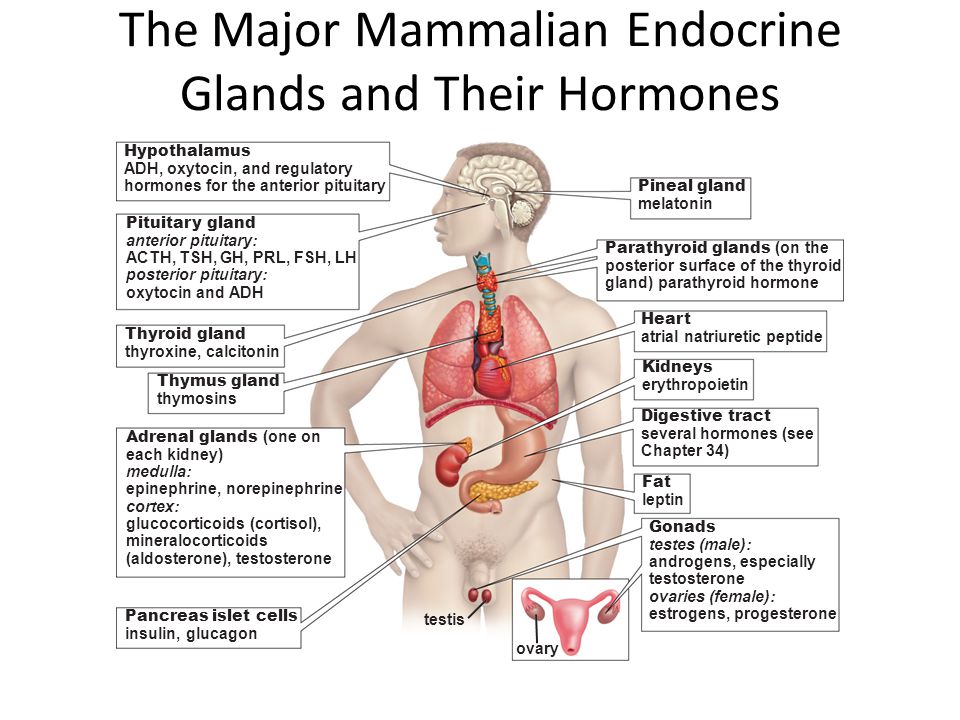 Examples of exocrine glands include the sebaceous and sweat glands of the skin. As just noted, the pancreas also has an exocrine function: most of its cells secrete pancreatic juice through the pancreatic and accessory ducts to the lumen of the small intestine.
Examples of exocrine glands include the sebaceous and sweat glands of the skin. As just noted, the pancreas also has an exocrine function: most of its cells secrete pancreatic juice through the pancreatic and accessory ducts to the lumen of the small intestine.
Other Types of Chemical Signaling
In endocrine signaling, hormones secreted into the extracellular fluid diffuse into the blood or lymph, and can then travel great distances throughout the body. In contrast, autocrine signaling takes place within the same cell. An autocrine (auto- = “self”) is a chemical that elicits a response in the same cell that secreted it. Interleukin-1, or IL-1, is a signaling molecule that plays an important role in inflammatory response. The cells that secrete IL-1 have receptors on their cell surface that bind these molecules, resulting in autocrine signaling.
Local intercellular communication is the province of the paracrine, also called a paracrine factor, which is a chemical that induces a response in neighboring cells. Although paracrines may enter the bloodstream, their concentration is generally too low to elicit a response from distant tissues. A familiar example to those with asthma is histamine, a paracrine that is released by immune cells in the bronchial tree. Histamine causes the smooth muscle cells of the bronchi to constrict, narrowing the airways. Another example is the neurotransmitters of the nervous system, which act only locally within the synaptic cleft.
Although paracrines may enter the bloodstream, their concentration is generally too low to elicit a response from distant tissues. A familiar example to those with asthma is histamine, a paracrine that is released by immune cells in the bronchial tree. Histamine causes the smooth muscle cells of the bronchi to constrict, narrowing the airways. Another example is the neurotransmitters of the nervous system, which act only locally within the synaptic cleft.
Career Connections
Endocrinologist Endocrinology is a specialty in the field of medicine that focuses on the treatment of endocrine system disorders. Endocrinologists—medical doctors who specialize in this field—are experts in treating diseases associated with hormonal systems, ranging from thyroid disease to diabetes mellitus. Endocrine surgeons treat endocrine disease through the removal, or resection, of the affected endocrine gland.
Patients who are referred to endocrinologists may have signs and symptoms or blood test results that suggest excessive or impaired functioning of an endocrine gland or endocrine cells. The endocrinologist may order additional blood tests to determine whether the patient’s hormonal levels are abnormal, or they may stimulate or suppress the function of the suspect endocrine gland and then have blood taken for analysis. Treatment varies according to the diagnosis. Some endocrine disorders, such as type 2 diabetes, may respond to lifestyle changes such as modest weight loss, adoption of a healthy diet, and regular physical activity. Other disorders may require medication, such as hormone replacement, and routine monitoring by the endocrinologist. These include disorders of the pituitary gland that can affect growth and disorders of the thyroid gland that can result in a variety of metabolic problems.
The endocrinologist may order additional blood tests to determine whether the patient’s hormonal levels are abnormal, or they may stimulate or suppress the function of the suspect endocrine gland and then have blood taken for analysis. Treatment varies according to the diagnosis. Some endocrine disorders, such as type 2 diabetes, may respond to lifestyle changes such as modest weight loss, adoption of a healthy diet, and regular physical activity. Other disorders may require medication, such as hormone replacement, and routine monitoring by the endocrinologist. These include disorders of the pituitary gland that can affect growth and disorders of the thyroid gland that can result in a variety of metabolic problems.
Some patients experience health problems as a result of the normal decline in hormones that can accompany aging. These patients can consult with an endocrinologist to weigh the risks and benefits of hormone replacement therapy intended to boost their natural levels of reproductive hormones.
In addition to treating patients, endocrinologists may be involved in research to improve the understanding of endocrine system disorders and develop new treatments for these diseases.
Chapter Review
The endocrine system consists of cells, tissues, and organs that secrete hormones critical to homeostasis. The body coordinates its functions through two major types of communication: neural and endocrine. Neural communication includes both electrical and chemical signaling between neurons and target cells. Endocrine communication involves chemical signaling via the release of hormones into the extracellular fluid. From there, hormones diffuse into the bloodstream and may travel to distant body regions, where they elicit a response in target cells. Endocrine glands are ductless glands that secrete hormones. Many organs of the body with other primary functions—such as the heart, stomach, and kidneys—also have hormone-secreting cells.
Interactive Link Questions
Visit this link to watch an animation of the events that occur when a hormone binds to a cell membrane receptor. What is the secondary messenger made by adenylyl cyclase during the activation of liver cells by epinephrine?
What is the secondary messenger made by adenylyl cyclase during the activation of liver cells by epinephrine?
cAMP
Review Questions
Endocrine glands ________.
- secrete hormones that travel through a duct to the target organs
- release neurotransmitters into the synaptic cleft
- secrete chemical messengers that travel in the bloodstream
- include sebaceous glands and sweat glands
C
Chemical signaling that affects neighboring cells is called ________.
- autocrine
- paracrine
- endocrine
- neuron
B
Critical Thinking Questions
Describe several main differences in the communication methods used by the endocrine system and the nervous system.
The endocrine system uses chemical signals called hormones to convey information from one part of the body to a distant part of the body. Hormones are released from the endocrine cell into the extracellular environment, but then travel in the bloodstream to target tissues. This communication and response can take seconds to days. In contrast, neurons transmit electrical signals along their axons. At the axon terminal, the electrical signal prompts the release of a chemical signal called a neurotransmitter that carries the message across the synaptic cleft to elicit a response in the neighboring cell. This method of communication is nearly instantaneous, of very brief duration, and is highly specific.
This communication and response can take seconds to days. In contrast, neurons transmit electrical signals along their axons. At the axon terminal, the electrical signal prompts the release of a chemical signal called a neurotransmitter that carries the message across the synaptic cleft to elicit a response in the neighboring cell. This method of communication is nearly instantaneous, of very brief duration, and is highly specific.
Compare and contrast endocrine and exocrine glands.
Endocrine glands are ductless. They release their secretion into the surrounding fluid, from which it enters the bloodstream or lymph to travel to distant cells. Moreover, the secretions of endocrine glands are hormones. Exocrine glands release their secretions through a duct that delivers the secretion to the target location. Moreover, the secretions of exocrine glands are not hormones, but compounds that have an immediate physiologic function. For example, pancreatic juice contains enzymes that help digest food.
True or false: Neurotransmitters are a special class of paracrines. Explain your answer.
True. Neurotransmitters can be classified as paracrines because, upon their release from a neuron’s axon terminals, they travel across a microscopically small cleft to exert their effect on a nearby neuron or muscle cell.
Glossary
- autocrine
- chemical signal that elicits a response in the same cell that secreted it
- endocrine gland
- tissue or organ that secretes hormones into the blood and lymph without ducts such that they may be transported to organs distant from the site of secretion
- endocrine system
- cells, tissues, and organs that secrete hormones as a primary or secondary function and play an integral role in normal bodily processes
- exocrine system
- cells, tissues, and organs that secrete substances directly to target tissues via glandular ducts
- hormone
- secretion of an endocrine organ that travels via the bloodstream or lymphatics to induce a response in target cells or tissues in another part of the body
- paracrine
- chemical signal that elicits a response in neighboring cells; also called paracrine factor
This work is licensed under a Creative Commons Attribution 4. 0 International License.
0 International License.
You can also download for free at http://cnx.org/contents/[email protected]
Attribution:
- For questions regarding this license, please contact [email protected].
- If you use this textbook as a bibliographic reference, then you should cite it as follows:
OpenStax College, Anatomy and Physiology. OpenStax CNX. http://cnx.org/contents/[email protected]. - If you redistribute this textbook in a print format, then you must include on every physical page the following attribution:
“Download for free at http://cnx.org/contents/[email protected].” - If you redistribute part of this textbook, then you must retain in every digital format page view (including but not limited to EPUB, PDF, and HTML) and on every physical printed page the following attribution:
“Download for free at http://cnx.org/contents/14fb4ad7-39a1-4eee-ab6e-3ef2482e3e22@11. 1.”
1.”
Endocrine Glands – Hormonal and Metabolic Disorders
By
William F. Young, Jr
, MD, MSc, Mayo Clinic College of Medicine
Reviewed/Revised Apr 2022 | Modified Sep 2022
VIEW PROFESSIONAL VERSION
Topic Resources
The endocrine system consists of a group of glands and organs that regulate and control various body functions by producing and secreting hormones. Hormones are chemical substances that affect the activity of another part of the body. In essence, hormones serve as messengers, controlling and coordinating activities throughout the body.
The individual organs that make up the endocrine system have different and often unrelated functions. Doctors who specialize in disorders of the endocrine system are known as endocrinologists. Many endocrinologists further subspecialize in the functions and disorders of specific glands.
Many endocrinologists further subspecialize in the functions and disorders of specific glands.
VIDEO
The major glands of the endocrine system, each of which produces one or more specific hormones, are the
Hypothalamus
Pituitary gland Overview of the Pituitary Gland The pituitary is a pea-sized gland that is housed within a bony structure (sella turcica) at the base of the brain. The sella turcica protects the pituitary but allows very little room for expansion… read more
Thyroid gland Overview of the Thyroid Gland The thyroid is a small gland, measuring about 2 inches (5 centimeters) across, that lies just under the skin below the Adam’s apple in the neck. The two halves (lobes) of the gland are connected… read more
Parathyroid glands Overview of Parathyroid Function (See also Overview of the Thyroid Gland; Hypercalcemia; and Hypocalcemia.) The thyroid is a small gland, measuring about 2 inches (5 centimeters) across, that lies just under the skin below.
 .. read more
.. read moreIslet cells of the pancreas
Adrenal glands Overview of the Adrenal Glands The body has two adrenal glands, one near the top of each kidney. They are endocrine glands, which secrete hormones into the bloodstream. Each adrenal gland has two parts. Medulla: The inner… read more
Testes in men, and the ovaries in women
The hypothalamus (a small region of the brain that connects to the pituitary gland) secretes several hormones that control the pituitary gland. The pituitary gland Pituitary: The Master Gland is sometimes called the master gland because it secretes hormones that control the functions of many other endocrine glands Endocrine Controls The main function of endocrine glands is to secrete hormones directly into the bloodstream. Hormones are chemical substances that affect the activity of another part of the body (target site)… read more .
During pregnancy, the placenta also acts as an endocrine gland by producing hormones that support the pregnancy in addition to its other functions Development of the Fetus and Placenta A baby goes through several stages of development, beginning as a fertilized egg. The egg develops into a blastocyst, an embryo, then a fetus. During each normal menstrual cycle, one egg (ovum)… read more .
The egg develops into a blastocyst, an embryo, then a fetus. During each normal menstrual cycle, one egg (ovum)… read more .
Major Endocrine Glands
The major glands of the endocrine system are the hypothalamus, the pituitary gland, the thyroid gland, the parathyroid glands, the islet cells of the pancreas, the adrenal glands, the testes in men, and the ovaries in women. |
Not all organs that secrete hormones or hormone-like substances are considered part of the endocrine system. For example, the kidneys produce the hormone renin, which functions as an enzyme to help control blood pressure, and the hormone erythropoietin to stimulate the bone marrow to produce red blood cells. In addition, the digestive tract produces a variety of hormones that control digestion, affect insulin secretion from the pancreas, and alter behaviors, such as those associated with hunger. Fat (adipose) tissue also produces hormones that regulate metabolism (how the body uses foods to control chemical processes in the body) and appetite.
Additionally, the term “gland” does not necessarily mean that the organ is part of the endocrine system. For example, sweat glands, salivary glands, glands in mucus membranes, and mammary glands are called exocrine glands, because they secrete substances other than hormones and because they secrete the substances into ducts, not directly into the bloodstream.
The pancreas Pancreas The pancreas is an organ that contains two types of glandular tissue: Pancreatic acini Islets of Langerhans (See also Overview of the Digestive System.) The acini produce digestive enzymes…. read more is both an endocrine and exocrine gland. Specialized areas within the pancreas make insulin and other hormones that are released into the bloodstream to regulate the level of sugar in the blood, and other areas make digestive fluids that pass through the pancreatic duct and eventually into the small intestine to help digest food.
Did You Know…
|
NOTE:
This is the Consumer Version.
DOCTORS:
VIEW PROFESSIONAL VERSION
VIEW PROFESSIONAL VERSION
Copyright © 2023 Merck & Co., Inc., Rahway, NJ, USA and its affiliates. All rights reserved.
Test your knowledge
Take a Quiz!
124. Peripheral links of the endocrine system dependent and independent of the anterior pituitary gland.
peripheral
link dependent on the anterior lobe
pituitary gland: thyroid gland (thyrocytes),
adrenal cortex, gonads
(testicles and ovaries), placenta.
peripheral
link independent of the anterior lobe
pituitary gland (self-regulating): thyroid
gland, parathyroid glands, brain
adrenal substance, islets
Langerhans pancreas,
single hormone-producing cells
nervous and non-nervous origin.
125. The concept of hypo- and hyperfunction of the internal secretion organs.
Under
hypofunction
endocrine glands is understood
weakening of the body
internal secretion leading to
decrease in hormone production. Under
hyperfunction
the reverse is understood. Phenomena
hypo- and hyperfunctions are inherent in almost all
organs of internal secretion. For example,
the most striking manifestations of hypofunction
the anterior lobe of the pituitary gland, which produces
somatotropic hormone (growth hormone),
leads to slowdowns and delays
child growth and puberty,
and with phenomena of hyperfunction of this lobe
the child develops gigantism and
early puberty, and in adults
– acromegaly, disproportionate
hand, foot, individual
fingers, parts of the facial skull (nose,
ears, chin) and internal organs.
7. Angiology
126. The concept of the cardiovascular system, its functions.
TO
cardiovascular system include
heart, blood and lymph
vessels. The central body of this system
is the heart.
Cardiovascular
system performs transport
function ,
providing delivery through the arteries with
blood nutrients and oxygen
to organs and tissues, and through veins with blood
and lymphatic vessels with lymph –
removal from tissues and organs of products
metabolism. Along the vascular
hormones are also transported.
Through the elements of the microcirculatory
channels (ICR) are carried out exchange
processes .
127. Vessel wall membranes, their functions.
All
vessels, except for elements of the microcirculatory
channels have the same structure
walls. Arteries, veins and lymphatics
vessels it consists of three shells
– internal, middle and external.
Internal
sheath ,
tunica
intima
made up of endothelial lining
located on the basement membrane.
Endothelial cells provide
laminar flow of blood and lymph. Medium
sheath ,
tunica
media
made up of smooth muscle cells
circular and spiral arrangement.
This membrane changes the lumen of blood vessels,
provides a continuous flow of blood and
lymph, regulates blood pressure and
lymph in vessels. Outdoor
sheath
(adventitia), tunica
externa
formed by loose connective tissue
cloth, contains vasa
vasorum
et
nervous
vasorum,
providing blood supply and innervation
vessels.
Links
bloodstream. ICR elements, their
functions.
IN
There are three parts in the bloodstream:
arterial, venous and located
between them – microcirculatory. At the ICR
includes the following elements: arterioles,
precapillaries, capillaries, postcapillaries
and venules. Arterioles and precapillaries
due to the presence of smooth muscle cells in their wall
cells and the ability of endothelial
precapillary cells to swelling and
swelling, regulate local
blood flow.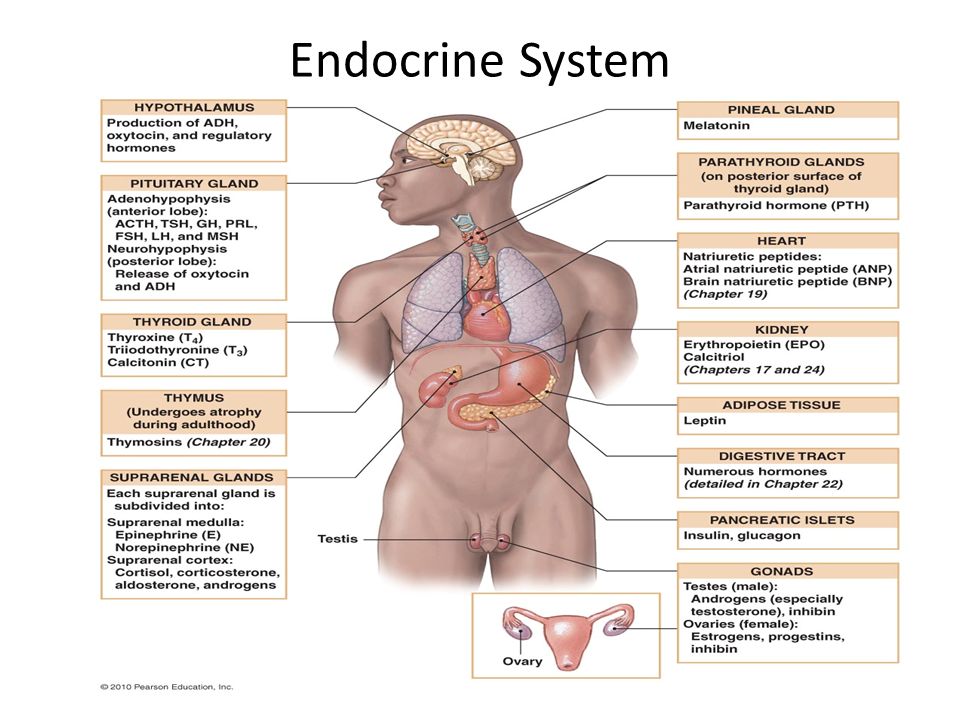 capillaries, post-capillaries and
capillaries, post-capillaries and
venules due to the specifics of their structure
endothelial cells provide
metabolic processes. a major role in these
processes play capillaries. Venules
perform a depository function.
Growth hormones – clinic “Family Doctor”.
Adolescence is the most important stage in the development of an adult and healthy person. It is during this period that the “second birth” of a person takes place, which should become a reliable support and basis for all his subsequent life.
The biological features of this stage largely depend on the functioning of the endocrine system. A distinctive feature of this difficult period is puberty. Adolescence lasts from 10 to 19years and is inextricably linked with the so-called “hormonal restructuring of the body.”
The main feature of hormonal restructuring in adolescence is the activation of the hypothalamic-pituitary system – the central link of the entire endocrine system. During this period, the peripheral endocrine glands are tuned to a new mode of operation: the thyroid gland, adrenal glands, gonads (ovaries, testicles) in order to ensure further active growth and development of the whole organism.
During this period, the peripheral endocrine glands are tuned to a new mode of operation: the thyroid gland, adrenal glands, gonads (ovaries, testicles) in order to ensure further active growth and development of the whole organism.
The main hormones involved in the formation of the body of a teenager
Growth hormone is necessary for the development and growth of the human body, enhances metabolic processes. Its production is maximum by the age of 12-14, during this period there is another “growth jump”.
The pituitary hormone, which stimulates the adrenal glands – small paired organs located directly above the kidneys, affects the growth of bone and muscle tissue and the body’s ability to adapt to stress. The adaptation of the adolescent organism to stress creates the basis and conditions for the assimilation of knowledge and the acquisition of social skills.
The pituitary hormone, which regulates the functioning of the thyroid gland, affects the metabolism of iodine, carbohydrate and protein metabolism, and is also one of the indicators of the level of fertility (fertility) of a woman.
Thyroid hormones significantly affect the growth and development of the body. The work of all organs depends on them, they are involved in all types of metabolism. The development of the brain is not complete without them – even from the prenatal period, thyroid hormones program the intellect and the level of mental development. The maturation of the reproductive system also depends on the production of this important hormone.
The need for thyroid hormones in adolescents is increased, which can affect the volume of the thyroid gland. An increase in the volume of the thyroid gland above age norms is a reason to consult a specialist so as not to miss the disease.
Sex hormones together with pituitary hormones affect the central nervous system and indirectly affect sexual behavior. The hormonal activity of the gonads directly affects the physical and sexual development of adolescents. The level of puberty is one of the main indicators of the maturity of the reproductive system.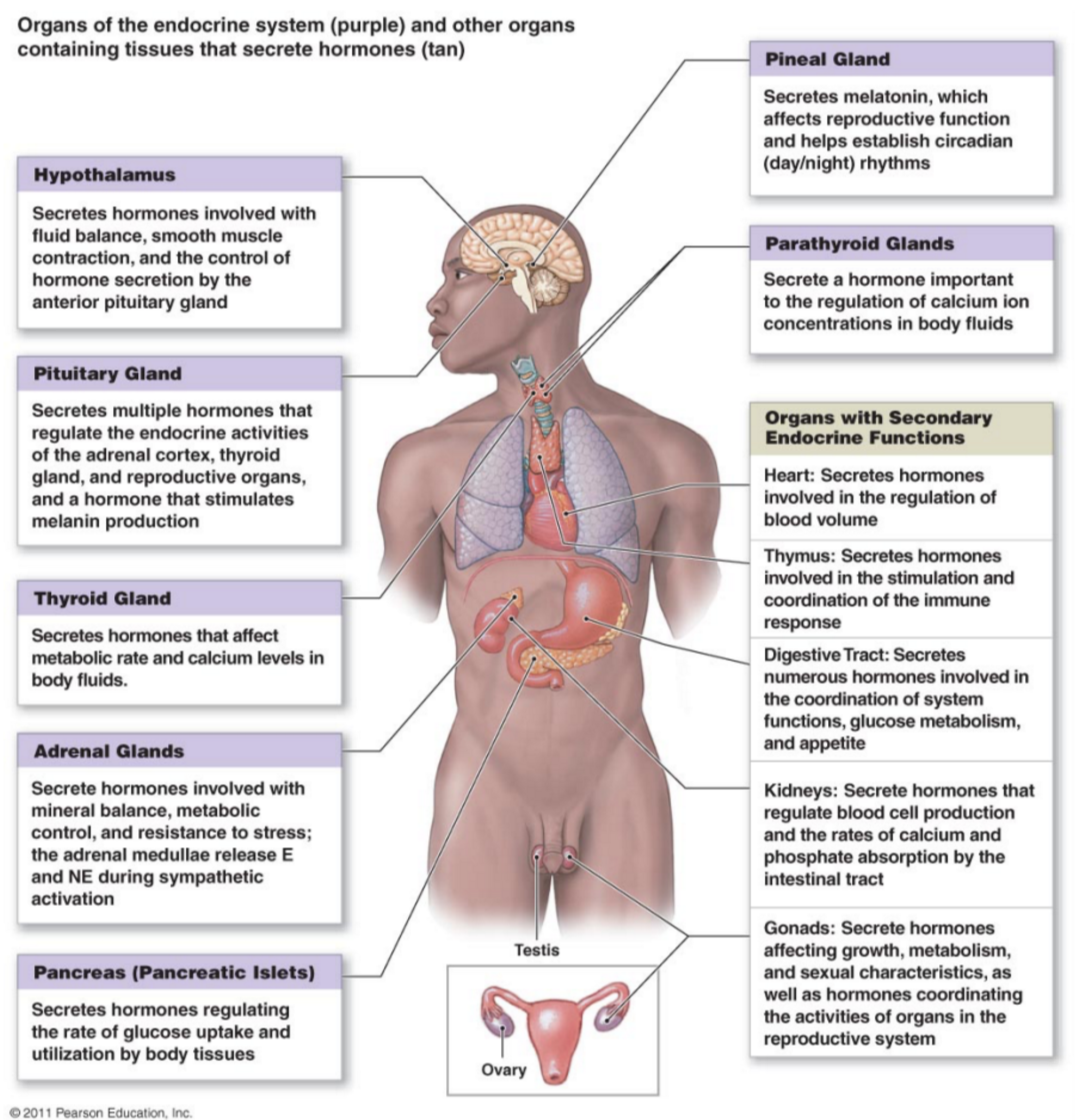

 1.”
1.”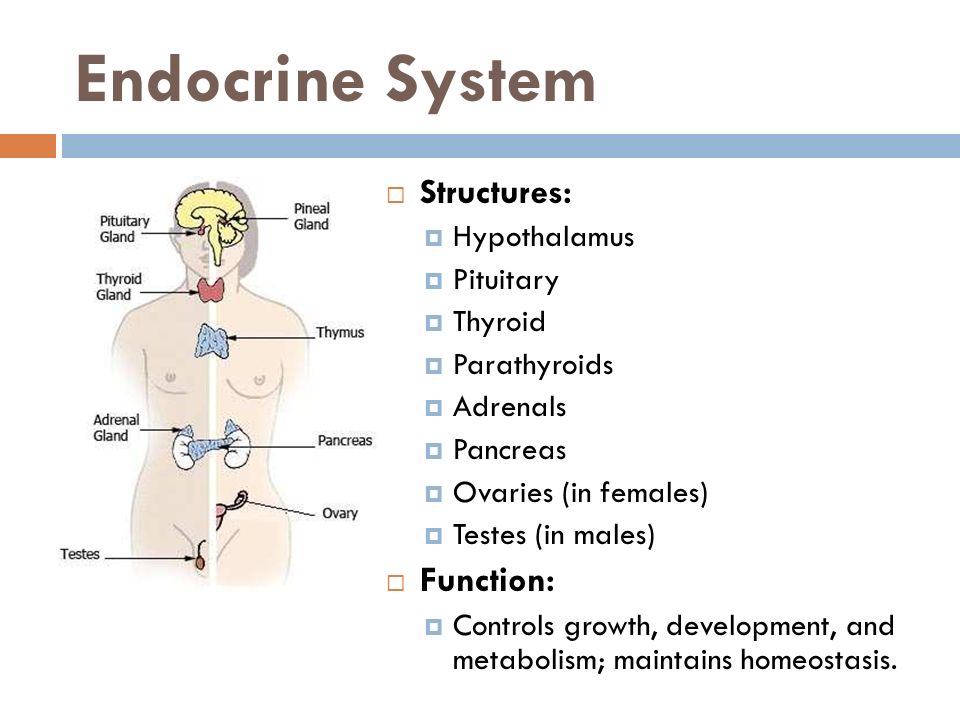 .. read more
.. read more However, lymph nodes Swollen Lymph Nodes Lymph nodes are tiny, bean-shaped organs that filter lymph fluid. They are located throughout the body, but particular collections are found just under the skin in the neck, under the arms,… read more are not glands.
However, lymph nodes Swollen Lymph Nodes Lymph nodes are tiny, bean-shaped organs that filter lymph fluid. They are located throughout the body, but particular collections are found just under the skin in the neck, under the arms,… read more are not glands.